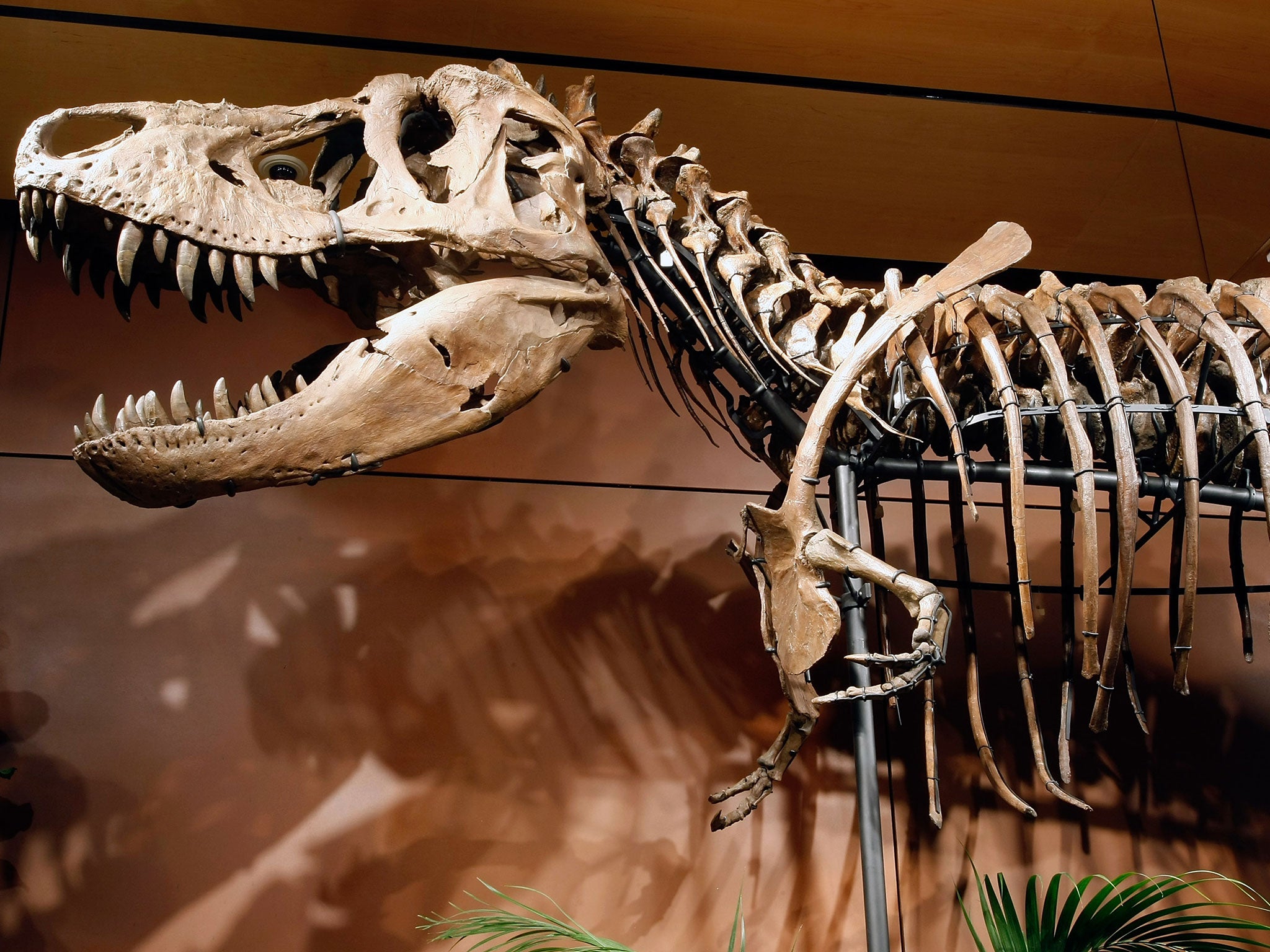Dinosaurs died out because of a giant asteroid and supervolcanoes, study says
Scientists say two theories that have been a bone of contention among experts for 35 years could both be true

Your support helps us to tell the story
From reproductive rights to climate change to Big Tech, The Independent is on the ground when the story is developing. Whether it's investigating the financials of Elon Musk's pro-Trump PAC or producing our latest documentary, 'The A Word', which shines a light on the American women fighting for reproductive rights, we know how important it is to parse out the facts from the messaging.
At such a critical moment in US history, we need reporters on the ground. Your donation allows us to keep sending journalists to speak to both sides of the story.
The Independent is trusted by Americans across the entire political spectrum. And unlike many other quality news outlets, we choose not to lock Americans out of our reporting and analysis with paywalls. We believe quality journalism should be available to everyone, paid for by those who can afford it.
Your support makes all the difference.It has been a bone of contention between dinosaur experts for the past 35 years – did dinosaurs become extinct as a result of a massive asteroid impact or were they snuffed out by stupendous volcanic eruptions? The answer is both, according to the latest study into the controversy.
Scientists have found that huge supervolcanoes known as the Deccan Traps, in what is now northern India, doubled their eruptions within about 50,000 years of the Earth being hit by a giant asteroid about 66 million years ago – both events combining to deliver a lethal double whammy to the stricken dinosaurs.
Although 50,000 years sounds a long time, it is a mere blink of the eye in geological history. It means that both the asteroid and the supervolcanoes most likely led to a huge global climate disturbance that killed off not just the dinosaurs but many other forms of terrestrial and marine life, scientists said.
The study, published in the journal Science, suggests that the impact of the asteroid or comet, which caused a huge crater 180km (110mile) wide off the coast of Mexico, triggered an abrupt change in to the underground “plumbing” of the Deccan Traps, which led to far more destructive eruptions for tens of thousands of years.
“Based on our dating of the lavas we can be pretty certain that the volcanism and the impact occurred within 50,000 years of the extinction, so it becomes somewhat artificial to distinguish between them as killing mechanisms. Both phenomena were clearly at work at the same time,” said Paul Renne of the University of California, Berkeley.
“It is going to be basically impossible to ascribe actual atmospheric effects to one or the other. They both happened at the same time,” Professor Renne said.
A giant asteroid impact and series of immense volcanic eruptions would each eject massive quantities of noxious gases and debris into the atmosphere around the world, which would cut out sunlight for hundreds or thousands of years causing global climate change affecting life on both land and sea.
Although the asteroid impact would have caused massive disruption to the climate it would have been relatively short-lived compared to the long-term impacts caused by the Deccan Traps erupting for thousands of years, the scientists said.
The atmospheric fallout from a global catastrophe can be seen today in a geological layer known as the K-T boundary, dated to 66 million years ago. The scientist suggest this boundary, which coincides the demise of the dinosaurs, was the result of both asteroid impact and volcanic eruptions.
“At the K-T boundary, we see major changes in the volcanic system of the Deccan Traps, in terms of the rate at which eruptions were happening, the size of the eruptions, the volume of the eruptions and some aspects of the chemistry of the eruptions – which speaks to the actual processes by which the magmas were generated,” Professor Renne said.
“All these things changed in a fundamental way and increasingly it seems they happened right at the K-T boundary. Our data don’t conclusively prove that the impact caused these changes, but the connection looks increasingly clear,” he said.
An asteroid impact may have triggered immense earthquakes near the Deccan Traps that rattled the underground, magma-filled chambers and channels causing a shift from high-frequency, low volume eruptions to much more damaging low frequency, high volume eruptions, the scientists said.
“If our high-precision dates continue to pin these three events – the impact, the extinction and the major pulse of volcanism – closer and closer together, people are going to have to accept the likelihood of a connection among them,” said Mark Richards, professor of earth and planetary sciences at Berkeley.
“The scenario we are suggesting – that the impact triggered the volcanism – does in fact reconcile what had previously appeared to be an unimaginable coincidence,” Professor Richards said.
Join our commenting forum
Join thought-provoking conversations, follow other Independent readers and see their replies
Comments